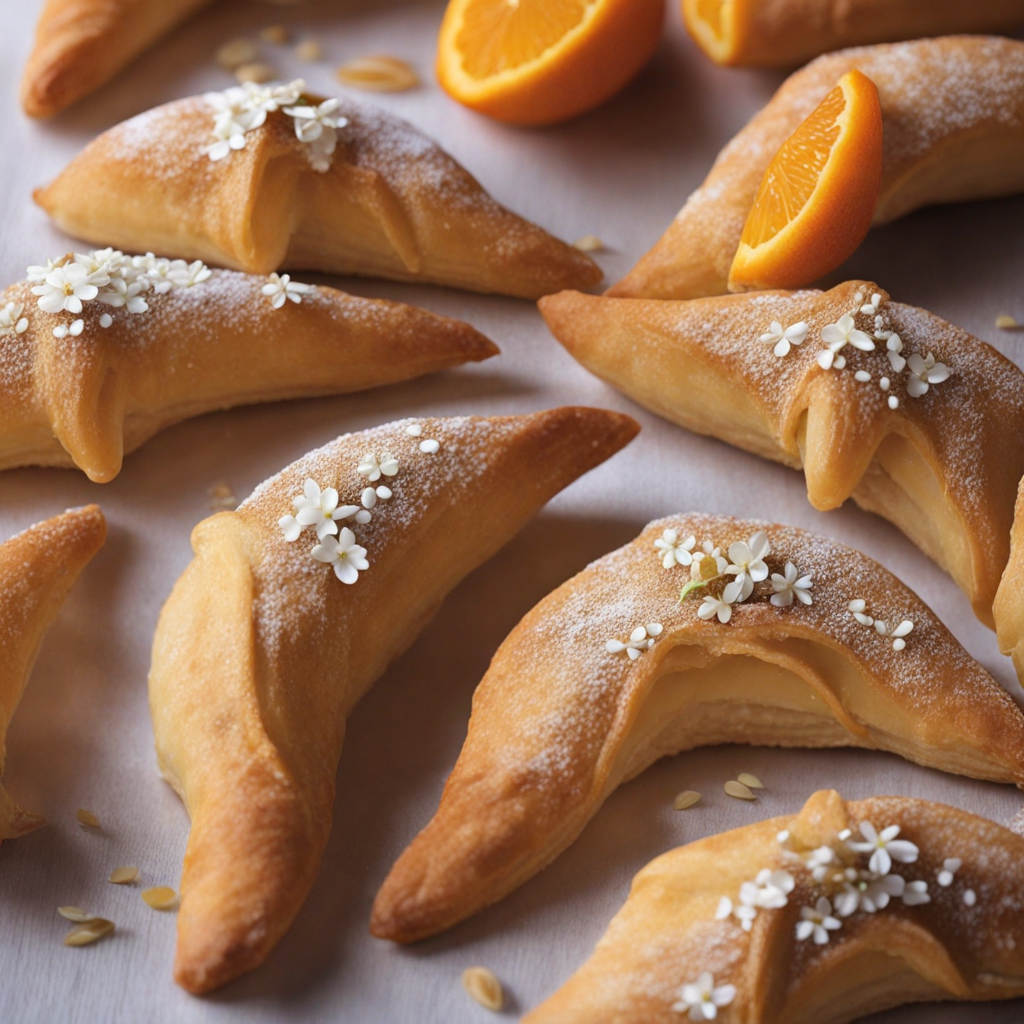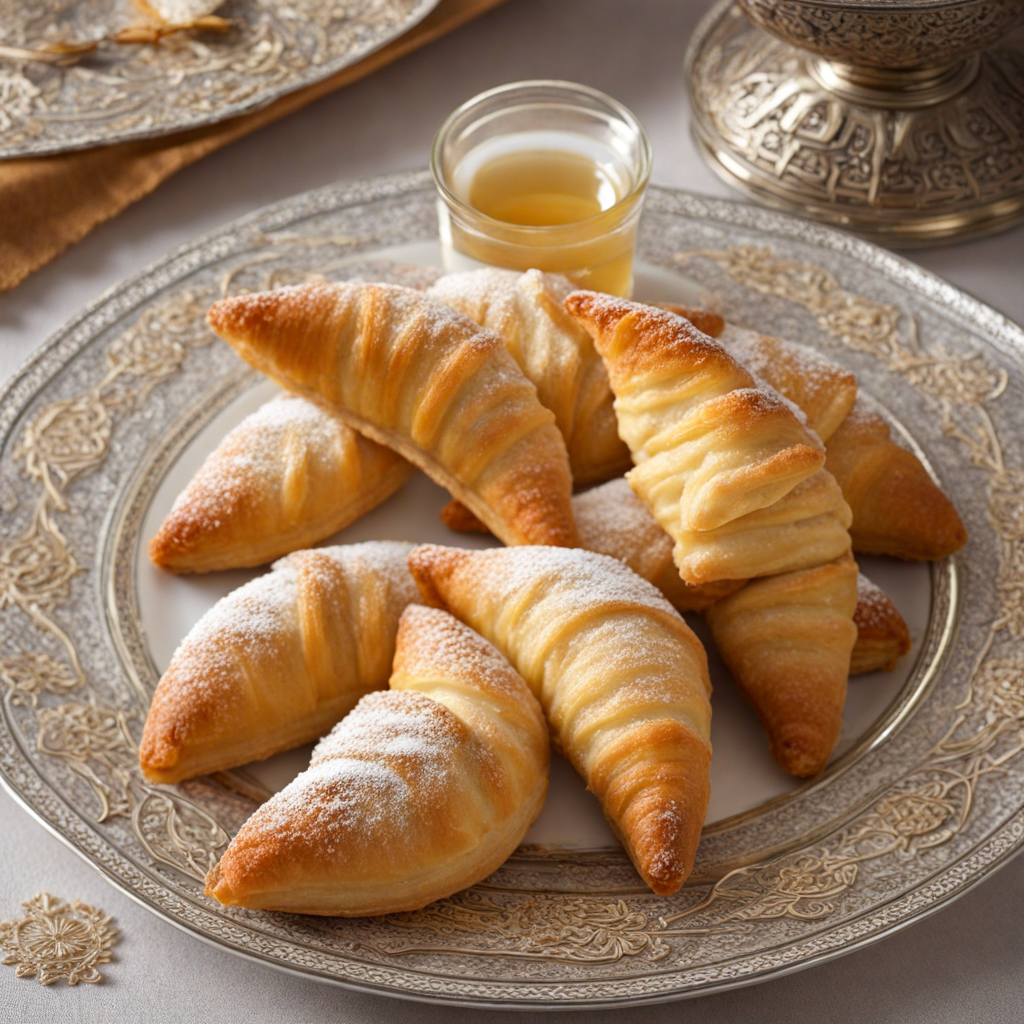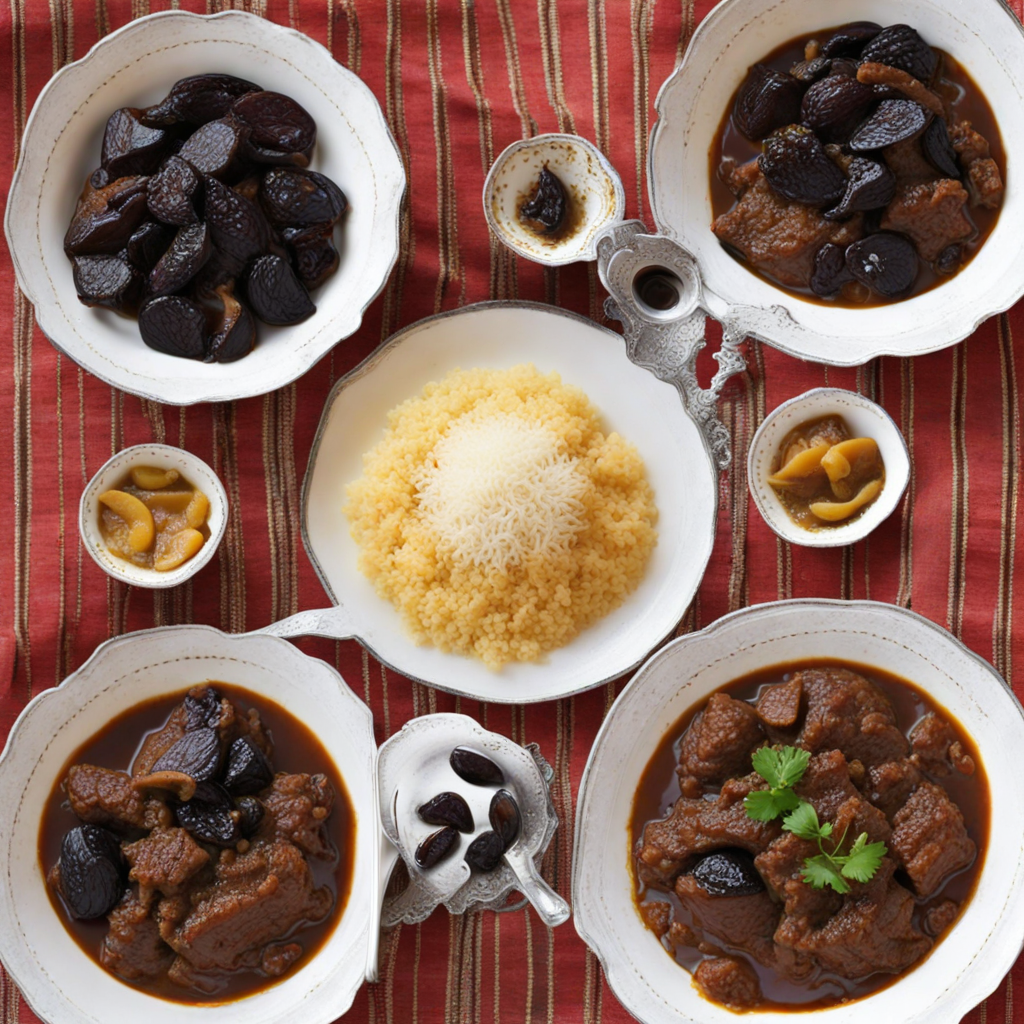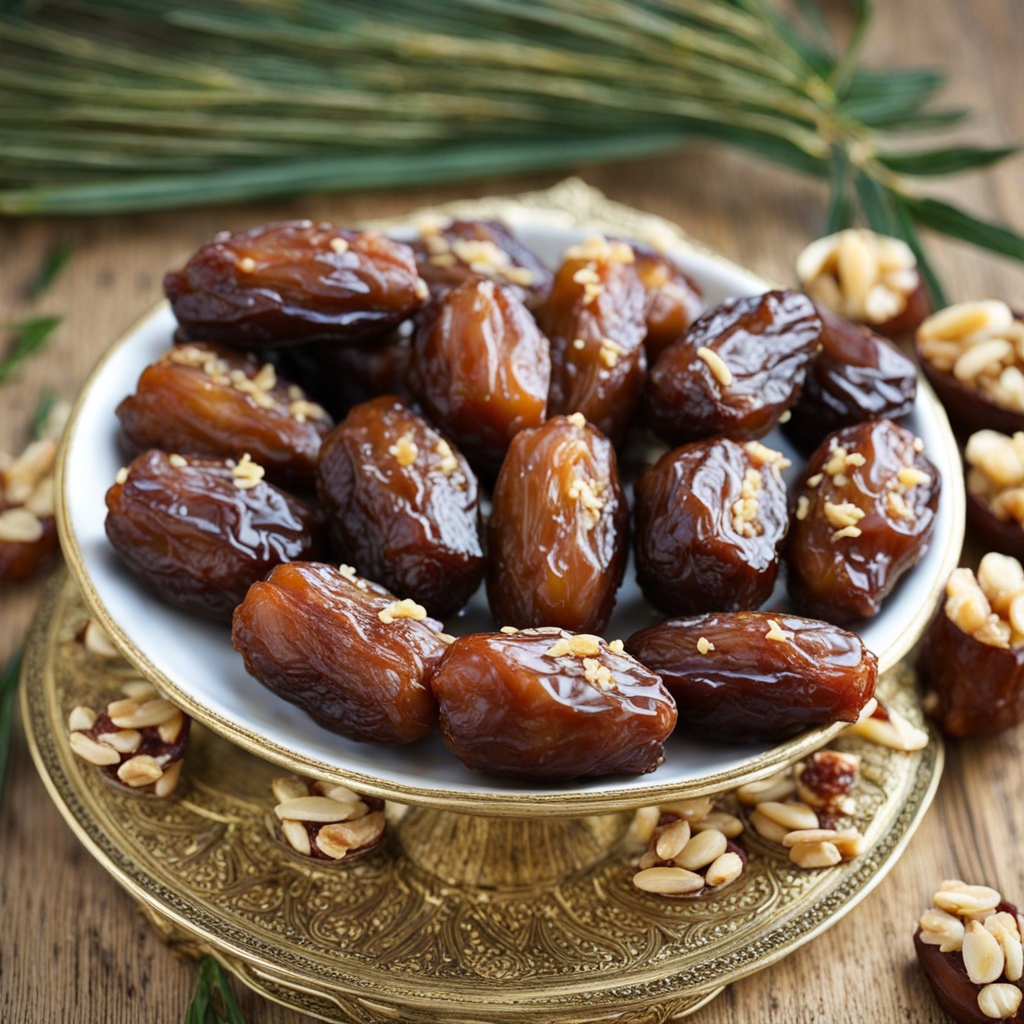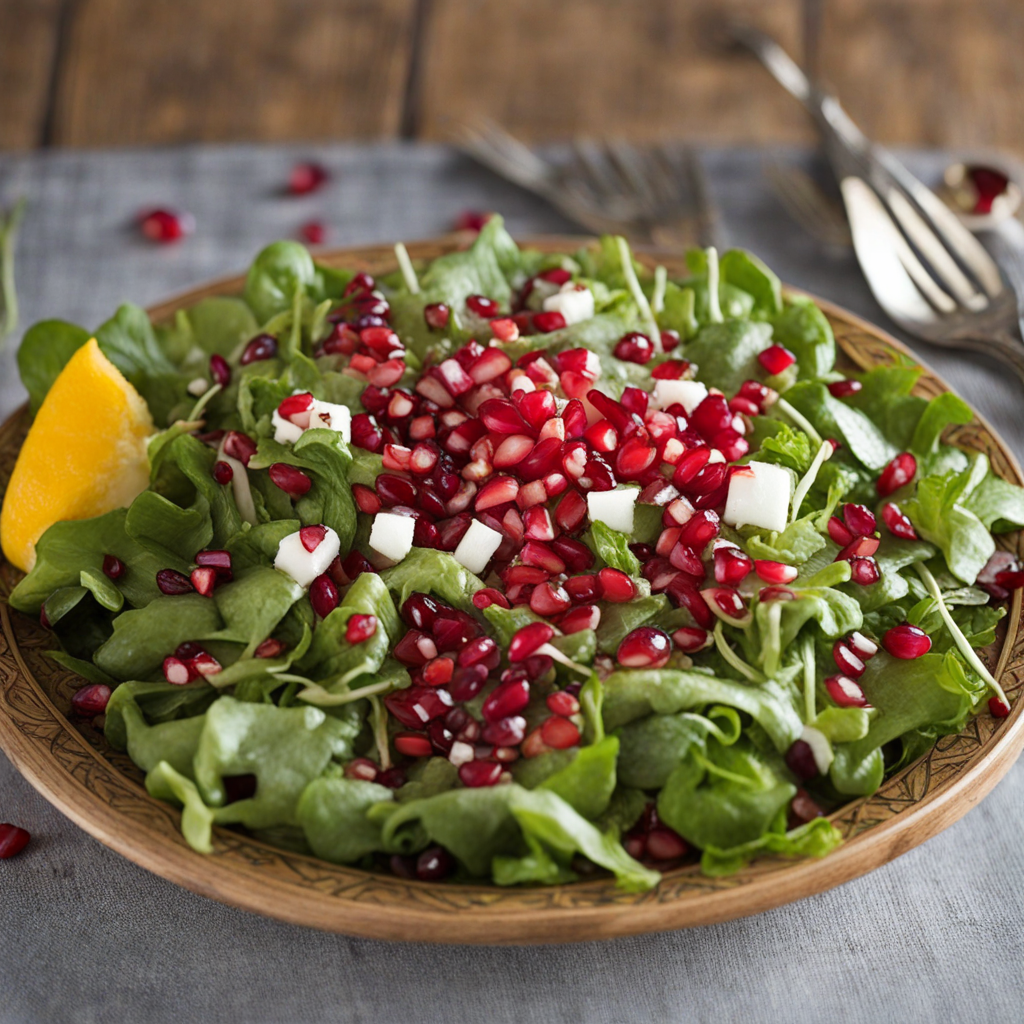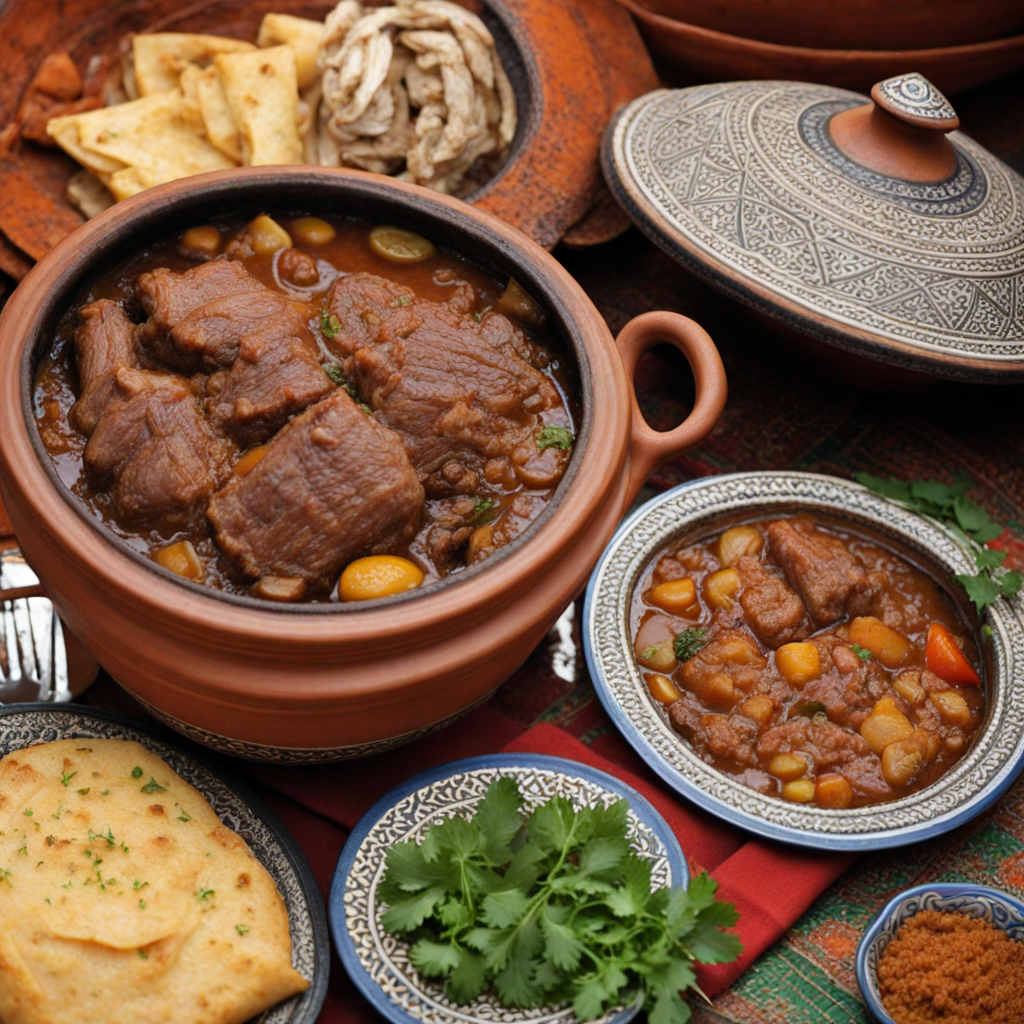Kaab el Ghazal
Kaab el Ghazal, translating to "gazelle horns," are delicate pastries that embody the rich culinary traditions of Morocco. These crescent-shaped confections are made from a thin, flaky dough, often enriched with almonds and flavored with orange blossom water. The pastry is meticulously rolled and shaped to resemble the elegant horns of a gazelle, showcasing the artistry and skill involved in their preparation. The outer layer achieves a perfect balance of crispiness and tenderness, creating a delightful texture that complements the sweet filling within.
The filling of Kaab el Ghazal is a harmonious blend of finely ground almonds, sugar, and aromatic spices such as cinnamon, which infuse the pastry with warmth and depth. The use of orange blossom water not only enhances the flavor but also imparts a fragrant aroma that is both inviting and refreshing. Each bite reveals a sweet, nutty center that is delicately balanced, making it a perfect accompaniment to Moroccan mint tea or as a standalone treat during festive occasions.
How It Became This Dish
The Enchanting History of كعب الغزال (Keb Ghzal) from Morocco The delightful pastry known as كعب الغزال, or "Keb Ghzal," translates to "deer’s hoof" in Arabic, a name that alludes to its distinctive shape reminiscent of a deer's hoof. This exquisite treat hails from Morocco, a country renowned for its rich culinary heritage, where the interplay of flavors, aromas, and textures reflects a tapestry of diverse cultural influences. Keb Ghzal holds a special place in Moroccan gastronomy, showcasing the region's artistry and love for sweets. #### Origins and Early Development The origins of كعب الغزال trace back to the rich history of Morocco, where the blending of Berber, Arab, and Andalusian influences shaped the nation’s culinary landscape. The Berbers, the indigenous people of North Africa, have long been known for their hospitality and their culinary skills, which include using nuts, honey, and spices in their cooking. The arrival of Arab traders in the 7th century introduced new ingredients and techniques, further enriching the local cuisine. Keb Ghzal is thought to have emerged during the golden age of Moroccan cuisine in the 14th and 15th centuries when the country was a melting pot of cultures. The Andalusian influence, brought by the Moors fleeing Spain, contributed to the development of intricate pastry-making techniques. These new methods allowed for the creation of delicate sweets that would become a staple in Moroccan festivities, particularly during weddings and religious celebrations such as Ramadan and Eid al-Fitr. #### Cultural Significance Keb Ghzal is more than just a pastry; it is a symbol of Moroccan culture and tradition. Its preparation is often a communal activity, bringing families and friends together, especially during special occasions. The act of making these pastries is steeped in ritual, with each step reflecting the care and attention to detail that Moroccan cooks pride themselves on. The filling of Keb Ghzal typically consists of ground almonds mixed with sugar, cinnamon, and sometimes orange blossom water, which adds a subtle floral note. This mixture is then encased in a thin layer of dough, shaped into crescent-like forms that resemble a deer's hoof. The pastries are often dusted with powdered sugar before serving, creating a visually appealing contrast against the delicate golden-brown crust. In Moroccan culture, food is deeply intertwined with hospitality. Offering Keb Ghzal to guests is a sign of generosity and respect. It is common to accompany these pastries with mint tea, a quintessential Moroccan beverage that represents warmth and friendship. The combination of Keb Ghzal and mint tea encapsulates the essence of Moroccan hospitality, making it a beloved treat in gatherings and celebrations. #### Evolution Over Time As time progressed, the popularity of كعب الغزال spread throughout Morocco and beyond. In the late 19th and early 20th centuries, as Morocco became a focal point for European travelers and colonizers, the demand for traditional Moroccan sweets grew. Keb Ghzal was among the pastries that captivated visitors with its unique flavors and delicate texture. In contemporary Morocco, Keb Ghzal has undergone various adaptations while still maintaining its traditional roots. While the classic recipe remains popular, innovative bakers have begun to experiment with different fillings and flavors, incorporating ingredients like pistachios, dates, or chocolate. These modern variations not only cater to evolving palates but also reflect the ongoing dialogue between tradition and innovation in Moroccan cuisine. With globalization, Keb Ghzal has gained international recognition, and it can now be found in Moroccan bakeries and restaurants around the world. This exposure has allowed for the sharing of Moroccan culinary traditions, leading to a greater appreciation for the artistry behind these pastries. Food festivals and cultural events often showcase Keb Ghzal, allowing people from diverse backgrounds to experience the flavors of Morocco. #### Craftsmanship and Technique The making of كعب الغزال is an art form that requires skill and patience. The dough, typically made from flour, butter, and a pinch of salt, is rolled out to an incredibly thin layer. This technique ensures that the pastry remains delicate and flaky after baking. The filling, made from finely ground almonds, sugar, and spices, is carefully prepared, and the balance of flavors is crucial. The mixture must not be too wet or too dry to ensure that it holds its shape during baking. Shaping the pastries into the iconic hoof form is where the craft truly shines. Bakers often use a wooden mold or their hands to create the crescent shape, ensuring uniformity and beauty in presentation. After the pastries are shaped, they are baked to a golden perfection, capturing the delicate essence of the ingredients. #### Modern-Day Significance In today's Morocco, كعب الغزال continues to be a beloved treat, symbolizing the country’s culinary heritage. It is often enjoyed during special occasions, family gatherings, and celebrations, serving as a reminder of the rich cultural tapestry that defines Moroccan identity. Beyond Morocco, the pastry has become a culinary ambassador for the country, representing Moroccan sweetness and hospitality on the global stage. The increasing interest in Moroccan cuisine worldwide has led to a resurgence in the appreciation for traditional pastries like Keb Ghzal. Culinary enthusiasts and home cooks alike are exploring the art of Moroccan pastry-making, with recipes being shared across social media and food blogs. This revival not only preserves the traditional techniques but also inspires future generations to embrace their culinary heritage. #### Conclusion The history of كعب الغزال is a fascinating reflection of Morocco's rich cultural heritage, embodying the country's historical influences, communal values, and culinary artistry. From its origins rooted in Berber and Arab traditions to its evolution in contemporary kitchens, Keb Ghzal stands as a testament to the enduring appeal of Moroccan sweets. As this pastry continues to capture the hearts and palates of people around the world, it serves as a delicious reminder of the bonds forged through food, hospitality, and shared experiences. Whether enjoyed in a bustling Moroccan medina or a cozy café abroad, كعب الغزال remains a cherished symbol of Morocco's vibrant culinary landscape.
You may like
Discover local flavors from Morocco


